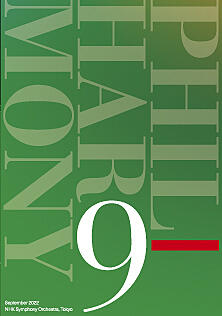- Home
- Concerts
- Subscription Concerts 2022-2023
- Program A
- No. 1962 Subscription (Program A)
No. 1962 Subscription (Program A)
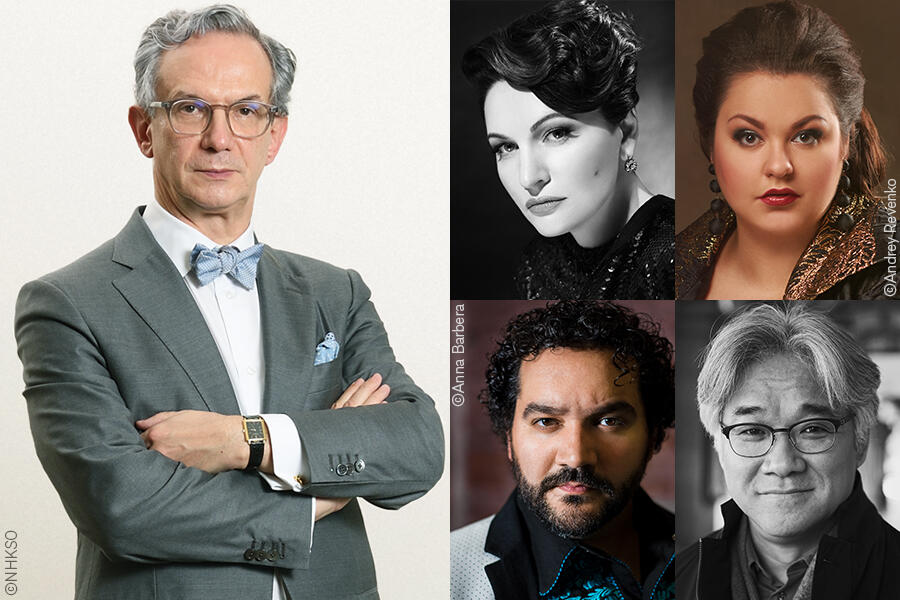
Program
Verdi / Messa da requiem
The Italian composer Verdi devoted his life to pursue the basics of the opera, eager to naturally express human emotions by means of singing. Having a bent for theater and a deep insight into human psychology, he left us twenty-six operas to personify a golden age of operatic history. The Requiem—or Mass for the dead—is, on the other hand, a vocal work for a funeral service offered in the Catholic Church. With a setting of liturgic Latin text, it is sung to pray for the peaceful rest of the deceased's soul.
By and large the opera and the Requiem are grounded on quite different aesthetics, but our Italian opera master realized an impressive marriage of the two in his Requiem. It is well known to be bitterly criticized by some of his contemporaries on grounds of its excessively dramatic and glowing effects for a sacred music. The conductor Hans von Bülow famously sneered at it commenting "opera in ecclesiastical dress." However, we should sufficiently consider that, to begin with, the creative urge and purpose Verdi had regarding it were much more personal and earthlier than religious.
In 1868, he wrote Libera me for a collaborative Requiem with a dozen colleagues in homage to the departed Italian idol Gioachino Rossini, but it remained unperformed because of premiere-related troubles. Later in 1873, Verdi thought of a musical tribute knowing about the death of Alessandro Manzoni, a great patriotic Italian man of letters the composer revered. And hence, he took the score of Libera me for Rossini from his drawer to complete his Requiem. It was premiered the next year for the first anniversary of Manzoni’s death.
Full of dramatic contrasts, this colossal work is in seven sections. The opening section commences with a tranquil chorus praying for the repose of the dead. The section II Dies irae (Day of wrath) is opened by a tempestuous chorus with the brass and bass drum inspiring dread of the Last Judgment, then next comes Tuba mirum (The trumpet, scattering its wondrous sound) introduced by the theatric fanfare with offstage and onstage trumpeters interplaying.
The placid section III Offertorio (Offertory) is sung by only soloists, while the joyous section IV Sanctus (Holy, Lord God of Hosts) is a closely woven fugue for the eight-part chorus. Following the restful section V Agnus Dei (Lamb of God, who takes away the world’s sins) and the mystic section VI Lux aeterna (May eternal light shine upon them), the final section Libera me (Deliver me, Lord, from eternal death) begins with a tense, expressive solo by soprano. After fearful Dies irae returns and then a magnificent fugue reaches its culmination, the Requiem comes to a reverent end with the soprano and chorus restating Libera me.
[Kumiko Nishi]
Artists
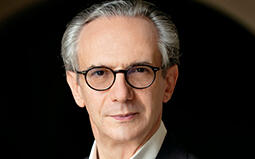 ConductorFabio Luisi
ConductorFabio Luisi
Fabio Luisi hails from Genoa. He is the Principal Conductor of the Danish National Symphony Orchestra and the Music Director of the Dallas Symphony Orchestra. From September 2022, he assumed the position of Chief Conductor of the NHK Symphony Orchestra, Tokyo.
Fabio Luisi was Principal Conductor of the Metropolitan Opera in New York, General Music Director of the Opernhaus Zürich, Principal Conductor of the Wiener Symphoniker, as well as General Music Director of the Staatskapelle Dresden and the Sächsische Staatsoper, Artistic Director and Principal Conductor of the MDR Sinfonieorchester Leipzig, and Music Director of the Orchestre de la Suisse Romande. He is Music Director of the Festival della Valle d’Itria in Martina Franca (Apulia) and has appeared as guest conductor with numerous renowned ensembles, including the Philadelphia Orchestra, the Cleveland Orchestra, the Münchener Philharmoniker, the Filarmonica della Scala, the London Symphony Orchestra, the Concertgebouworkest, and the Saito Kinen Orchestra, as well as with various prominent opera orchestras.
Important recordings include Verdi, Bellini, Schumann, Berlioz, Rachmaninov, Rimsky-Korsakov, Frank Martin, and Franz Schmidt, the largely forgotten Austrian composer. In addition, he has recorded various symphonic poems by Richard Strauss, and a lauded reading of Bruckner’s Symphony No. 9 with the Staatskapelle Dresden. His recordings of Wagner’s Siegfried and Götterdämmerung with the Metropolitan Opera Orchestra won Grammy awards.
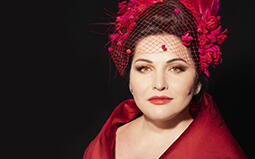 SopranoHibla Gerzmava
SopranoHibla Gerzmava
Hibla Gerzmava, blessed with a rich and bright voice and colorful expressiveness, is from Abkhazia which lies on the eastern coast of the Black Sea. Her name Hibla means golden eyes in the Abkhazian language and as suggested, she has a golden voice which captures the hearts of audiences. She graduated from the Moscow Conservatory in 1994, and was the the first female singer to win the Grand Prix at the International Tchaikovsky Competition in 1994. She has appeared at the world’s major opera houses including the Mariinsky Theatre, the Royal Opera House, the Metropolitan Opera House, the Wiener Staatsoper and the Opéra de Paris. In 2017, she made her debut at La Scala, Milan, and
at Sächsische Staatskapelle Dresden in 2018, thus the momentum of her activities is showing no sign of slowing down.
On the Mariinsky Theatre’s 2011 Japan tour she participated in, she sang the role of Liù in Turandot which was staged at NHK Hall, Tokyo, and garnered the highest praise. As she has sung Verdi’s Requiem at Arena di Verona in 2021, how she will perform the work with her firrst collaboration with the NHK Symphony Orchestra will be something we very much look forward to.
[Naoko Murota, music critic]
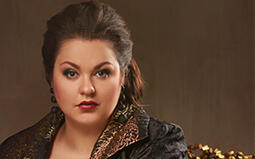 Mezzo sopranoOlesya Petrova
Mezzo sopranoOlesya Petrova
Olesya Petrova, who has been a soloist of the Mikhailovsky Theatre since 2016 is a mezzo soprano with a soft and warm tone, and has sung the roles of Ulrika in Un ballo in maschera, Santuzza in Cavalleria
Rusticana, and the Countess in The Queen of Spades at the theatre. She made her debut at the Metropolitan Opera House in 2014 singing Andrea Chénier, a theatre she often returns to, and her performance as Federica in Luisa Miller in 2018 directed by Elijah Moshinsky and transmitted live is still fresh in our memory. The opera houses where she has sung include the Operhaus Zürich, the Hamburgische Staatsoper, the Teatro Real of Madrid and the Gran Teatro del Liceu in Barcelona. In 2018, she made her debut at the Bolshoi Theatre, singing the role of Polina in a new production of The Queen of Spades.
She has also appeared in orchestral concerts in Russia, and has won artistic acclaim especially for her singing of Mozart’s Requiem and Coronation Mass as well as Stabat Mater by Pergolesi, therefore, we have a great expectation toward her performance of Verdi’s Requiem under the baton of Fabio Luisi, in her first appearance with the NHK Symphony Orchestra.
[Naoko Murota, music critic]
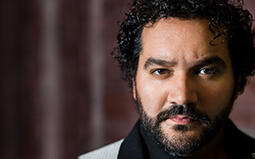 TenorRené Barbera
TenorRené Barbera
American tenor René Barbera has won high artistic acclaim for his unconstrained high-range voice and outstanding ornamentation technique as displayed in the role of Count Almaviva in Rossini’s The Barber of Seville staged at Tokyo’s New National Theatre in February 2020. He was the winner of the Metropolitan Opera National Council Auditions in 2008, and was the first-ever sole recipient of all three top awards of the Operalia Competition established by Plácido Domingo in 2011. While he
specializes in bel canto operas by Rossini and Donizetti, he sang the title role of Mozart’s Idomeneo for the first time at Teatro Massimo in Palermo in 2019, and has received high recognition. He continuously appears at the world’s notable opera houses such as La Scala, Milan and the Wiener Staatsoper, and is attracting a great deal of attention worldwide at present.
He performed Verdi’s Requiem on tour together with musicAeterna led by Teodor Currentzis in cities including Paris, Brussels, Cologne, Hamburg and Vienna. He will be appearing as a soloist of Requiem in his first collaboration with the NHK Symphony Orchestra, therefore, we are hoping to fully enjoy the singing voice of Mr. Barbera, which has been praised by the world.
[Naoko Murota, music critic]
 BassKwangchul Youn
BassKwangchul Youn
Korean bass singer Kwangchul Youn has acquired a wide range of repertoire as a member of the ensemble of the Staatsoper Berlin from 1993 to 2004, and in 2018 he was named "Berliner Kammersänger." Having Wagner and Verdi as his main repertoire, he sang from Tristan und Isolde and Die Meistersinger von Nürnberg in his first appearance in the NHK Symphony Orchestra’s subscription concert in 2015 under Sebastian Weigle. Mr. Youn has been performing in the world’s major opera houses, and in the 2021–22 season, he sang the role of Rocco in Fidelio at the Staatsoper Berlin, Hunding in Die Walküre at the Wiener Staatsoper and Gurnemanz in Parsifal at the Opéra de Paris, while frequently singing with orchestras including the Berliner Philharmoniker, the Wiener Philharmoniker, the Orchestra dell’Accademia Nazionale di Santa Cecilia, the Orchestra della Scala di Milano and the WDR Rundfunkorchester Köln (presently the WDR Sinfonieorchester Köln).
His coming appearance with the NHK Symphony Orchestra can be regarded as a rare opportunity to hear the first-rate performances of Asia’s outstanding bass singer once again.
[Naoko Murota, music critic]
 ChorusNew National Theatre Chorus
ChorusNew National Theatre Chorus
The New National Theatre Chorus launched its activities in April 1998 as a chorus group exclusive to the New National Theatre which was inaugurated in October, 1997. More than 100 members of the mixed chorus are selected through strict auditions. Each member has a high capability of singing and acting skills, and as an ensemble, powerful performances and beautiful harmonization have been highly regarded. Its pro"ciency, polished through its experience of working for wide variety of operatic works presented at the New National Theatre, has received high acclaim from operatic singers, conductors and stage directors. The chorus has also frequently performed with orchestras, including the Yomiuri Nippon Symphony Orchestra, the Tokyo Philharmonic Orchestra, the Tokyo Symphony Orchestra, as well as the Concertgebouworkest under Mariss Jansons, the Berlin Philharmoniker under Simon Rattle and the Cleveland Orchestra under Franz Welser-Möst. The chorus has worked with the NHK Symphony Orchestra more than 20 times, and they together enjoy great rapport on their collaboration.
[Naoko Murota, music critic]
Download
Ticket
Program A
No. 1962 Subscription (Program A)
NHK Hall
Google Map
Seating Chart
Single Tickets Release Date
Pre-sales for Subscribers:Thursday, August 4, 2022
*about subscribers
Sale to General Public:Sunday, August 7, 2022
Price
| S | A | B | C | D | E | |
|---|---|---|---|---|---|---|
| Ordinary Ticket | 12,000 | 10,000 | 8,000 | 6,500 | 5,000 | 3,300 |
| Youth Ticket | 6,000 | 5,000 | 4,000 | 3,200 | 2,500 | 1,600 |
Seating chart Enlarge Print PDF
*tax included
*About Youth tickets (Available at N-Kyo Guide)
*Subscribers receive a 10% discount (Available at NHKSO WEB Ticket and N-Kyo Guide)
*For wheelchair-accessible seats, please refer to the N-Kyo Guide
Starting Dates of Ticket Sales
ANNUAL SUBSCRIPTION TICKETS/
SEASONAL SUBSCRIPTION TICKETS (AUTUMN) Mon., July 18, 2022 11:00am
[For Subscribers: Thu., July 14, 2022 11:00am]
Youth Tickets
Youth Tickets are great options for those of 25 years old and younger
WEB Select 3 Plus
Choose three or more of your favorite concerts and get a discount on single tickets
*Only available at NHKSO WEB Ticket NHKSO WEB Ticket (Accesible from Japan only)
For further information and subscription application
N-Kyo Guide TEL:0570-02-9502

